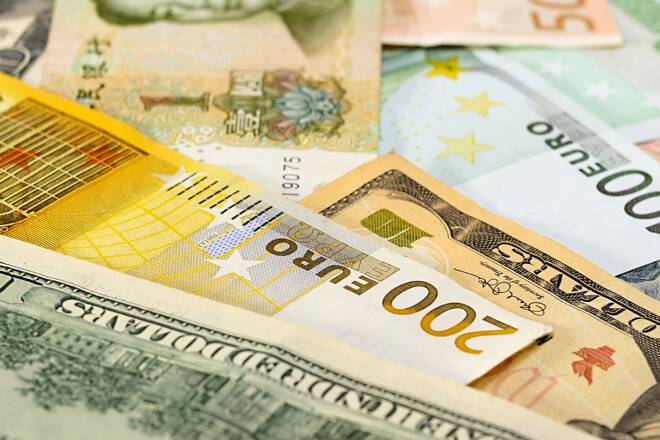Advertisement
Advertisement
EUR/USD Price Forecast: US Inflation and ECB Chatter to Test the EUR
By:
It has been a choppy morning for the EUR, with inflation figures delivering support. Later today, US inflation and ECB President Lagarde will influence.
For the EUR, it is a busy morning session, with German retail sales and French inflation in focus early on.
According to Destatis, German retail sales increased by 0.6% versus a forecasted 0.5%. Retail sales had fallen by 5.4% in April. Year on year, however, the numbers were less impressive, with retail sales down 3.6%. In April, retail sales had fallen by 0.4%, year on year.
Following mixed inflation figures on Wednesday, today’s numbers from France could force the ECB into a more aggressive policy move in September.
According to Insee, consumer prices increased 5.8% year on year, rising from 5.2% in May. Food and energy prices drove inflation higher at the end of the quarter. The Harmonised Index of Consumer prices increased by 6.5%, after a 5.8% rise in May.
Later this morning, German and Eurozone labor market stats will also draw interest ahead of central bank chatter.
On the monetary policy front, ECB President Christine Lagarde is due to speak late in the European session.
On Wednesday, the ECB President talked of the ECB being dependent on data to guide monetary policy.
The inflation figures from France, Spain, and Germany delivered mixed signals to test the ECB and deliver more market uncertainty.
According to prelim figures, Spain’s annual rate of inflation accelerated from 8.7% to 10.2%, while Germany’s softened from 7.9% to 7.6% in June.
Any reaction to today’s data and how the numbers could influence the ECB outlook on interest rates would be the key. One question for ECB President Lagarde will be the effect of any weakening in labor market conditions and consumption on monetary policy.
EUR/USD Price Action
At the time of writing, the EUR was up 0.02% to $1.04408.
A mixed morning saw the EUR fall to an early low of $1.04327 before rising to a high of $1.04687.
The EUR/USD left the Major Support and Resistance Levels untested early on.
Technical Indicators
The EUR/USD will need to move through the $1.0470 pivot to target the First Major Resistance Level (R1) at $1.0504.
Ahead of today’s US inflation numbers, demand for riskier assets will need to improve to support a return to $1.05.
An extended rally would test resistance at the Wednesday high of $ 1.05355 and the Second Major Resistance Level (R2) at $1.0570. The Third Major Resistance Level (R3) sits at $1.0671.
Failure to move through the pivot would bring the First Major Support Level (S1) at $1.0404 into play.
Barring an extended sell-off throughout the day, the EUR should avoid sub-$1.035. The Second Major Support Level (S2) at $1.0369 should limit the downside.
The Third Major Support Level (S3) sits at $1.0268.
Looking at the EMAs and the 4-hourly candlestick chart (below), it is a bearish signal.
This morning, EUR sat below the 50-day EMA, currently at $1.05217.
The 50-day EMA fell back from the 100-day EMA, with the 100-day EMA easing back from the 200-day EMA, EUR/USD price negative.
A move through the First Major Resistance Level would bring the 50-day EMA into play and support a run at the 100-day EMA, currently at $1.05431.
The US Session
It is a busy US economic calendar, with personal spending, the weekly jobless claims, and inflation the main stats of the day.
Assuming no sharp spike in jobless claims, the US Core PCE Price Index and personal spending numbers will influence the EUR/USD pair.
The downward trend in consumer confidence could continue should inflationary pressures build further. For the US economy, weak personal spending numbers could also reduce the chances of the Fed achieving a soft landing.
The combination would likely weigh on riskier assets and the EUR/USD pair, with the Fed seemingly unwilling to change tact should economic conditions weaken.
About the Author
Bob Masonauthor
With over 28 years of experience in the financial industry, Bob has worked with various global rating agencies and multinational banks. Currently he is covering currencies, commodities, alternative asset classes and global equities, focusing mostly on European and Asian markets.
Did you find this article useful?
Latest news and analysis
Advertisement
